ARE you ready for your first day of school? Some of you may have already had it. If you are anything like me, you may also be suffering from what I call classroom amnesia. You know, those rosy colored goggles where you got so used to your kids at the end of last year that you forget just how bad September can really be. Ahh how quickly we forget. I personally tend to block out September and October (post-traumatic stress disorder) but as much as we block it out, it always comes back and we find ourselves at the end of the first week of school saying “Surely this class is the chattiest/lowest/worst group I’ve ever had.” But truthfully we just forget how hard those first few weeks really are. I teach kindergarten and I teach special education, so when my babies come to me in September they really are just that: babies. I feel like sometimes teaching kindergarten is synonymous with herding sheep.
Here are a few things that you can do this summer to kickstart independence and promote peace in your classroom, whether you herd sheep teach kindergarten or not.
1. Photos of Lunch Choices
Raise your hand if you’ve ever said “chicken nuggets with rice” 18 times before 9:00 a.m. Kids this age can’t read a lunch menu, but they can look at a picture of a PBJ and decide it sounds good enough to eat that day. I hoard collect the spoons from frozen yogurt places and write my students’ names on the spoons as a little spin on the classic popsicle stick sign up. I feel as though this is a good opportunity to tell you that despite having this visual system in place, I did have a student two years ago come in and ask me “What the fri* is for lunch today?” From the mouth of babes! You can grab my Visual Lunch Choices on TPT by clicking here.
2. Command Center
This is the area of my classroom that has our daily schedule. The schedule on the red pocket chart is for the students to refer to. The schedule to the right is for the adults to refer to (aides, therapists, etc.) It can be time consuming to create, but I list every therapy that every student has and have it posted in the room so it is easy to find. As the school year goes on, I teach some kids how to read the therapy times and find out if they have therapy that day. Eventually they stop asking “Do I have speech today?”
3. Voice Levels
Our voice levels chart is pretty self-explanatory. When we are working I tell the students what level voice we should be on and adjust the clip accordingly. It replaces “shushing” the crowd 1,000 times.
4. Traveling Visual Schedule
Although this takes a lot of prep work on the teacher’s part, this system is great to encourage independence for students on the autism spectrum and students who thrive on structure. This is a paint stick from Home Depot with velcro on it. As the day progresses, students remove the activity as they complete it. The beauty of having it on the paint stick is that it can travel around the school with the student.
5. Labeled Supplies
Okay…so I am a *bit* anal when it comes to labeling bins. But this is seriously one of the most helpful systems I have in place. I teach my students where to find supplies that they need to borrow and how to put things away where they belong. It is also very helpful when you have other adults in the classroom with you. These are supplies that the students do NOT keep with them (see #8 for self-serve supplies).
6. Divided Workspaces
Oy VEY. I can’t stand to hear two students argue about being in each other’s space! I use duct tape to divide tables and set boundaries for students. This is an example at our tech table. It also does away with fighting over who got to which iPod first. You are assigned to iPod station #2. End of story.
7. Line Order Head Shots
At the beginning of the year I take a photo of all of my students, print and laminate them on little cards. Each week I change the order for lining up and move their pictures around. This visual does away with fighting over who lines up where and also allows students to independently line up by looking to see who they are behind or in front of. It’s also very helpful for substitutes and special area teachers. If you teach older grades, you could just have their names on the wall, but since some of my kiddos don’t recognize their own name yet, I certainly can’t expect them to recognize their friends’ names too.
8. Self-Serve Supplies
Unlike my supply bins that were labeled for students to easily help themselves to, these bins are our community supply bins. When a student runs out of glue sticks, pencils, etc. he can help himself to a new one without disrupting the class.

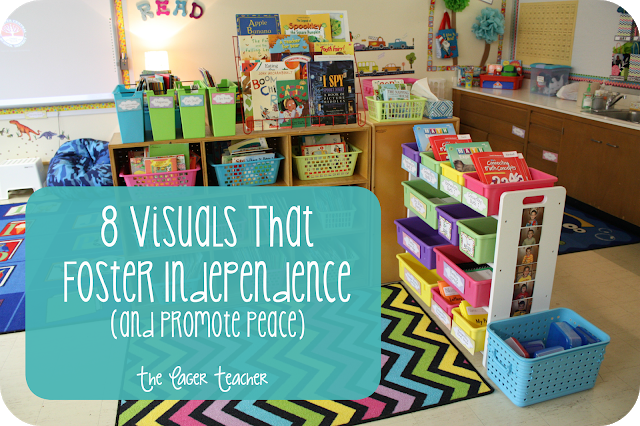

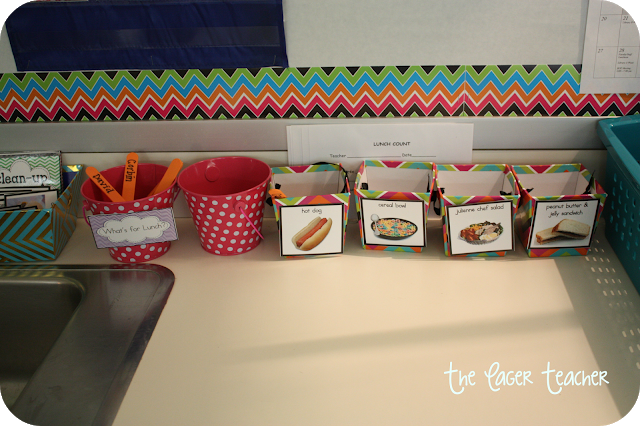

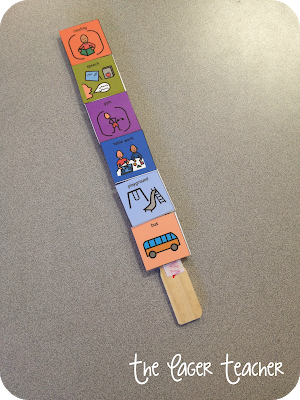

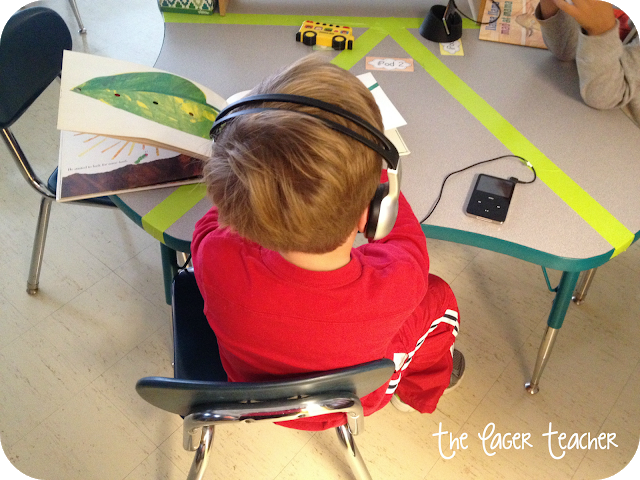


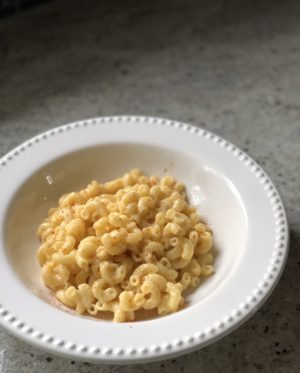



Sarah, I love this post! What amazing pictures and examples of how these visual supports can be used for any young students!!! Thanks for sharing it! I'm off to share on Pinterest and Facebook!!
Chris
Autism Classroom News
I love your visuals, especially the traveling one. Very clever and cute!
My friend Mary taught kindergarten for years and she called it herding butterflies.
I love that chevron multi colored carpet. Where can I find it?